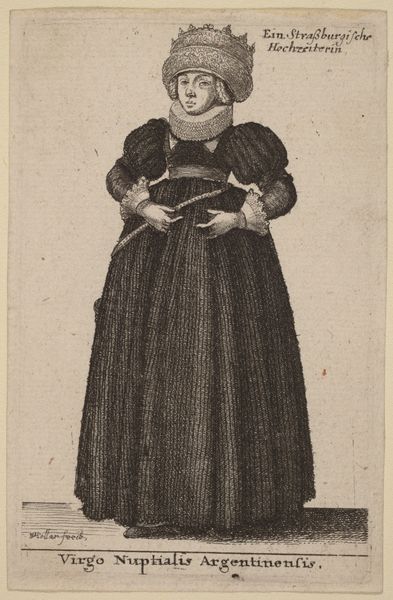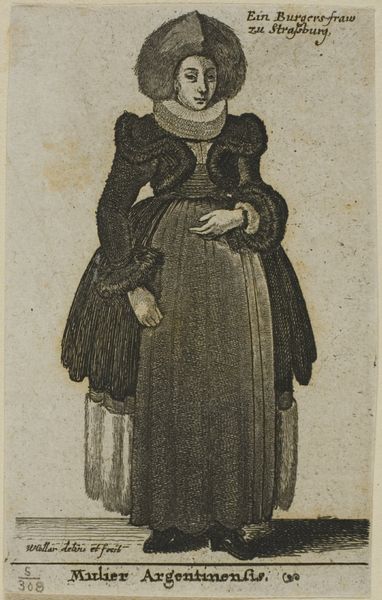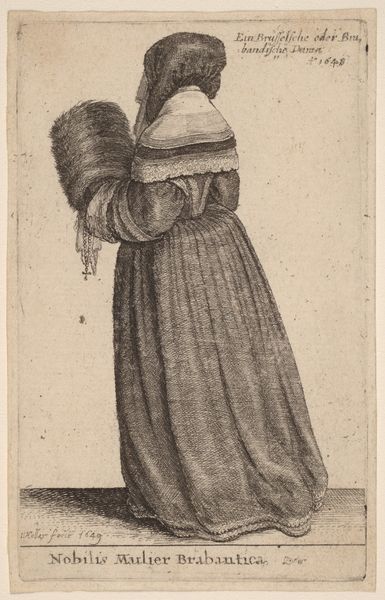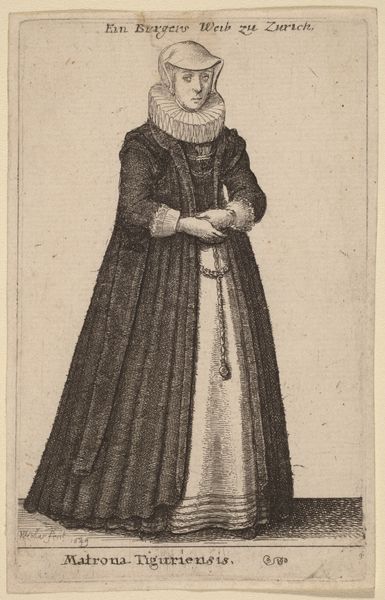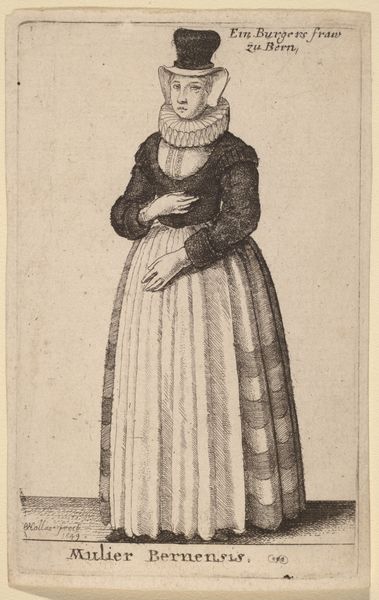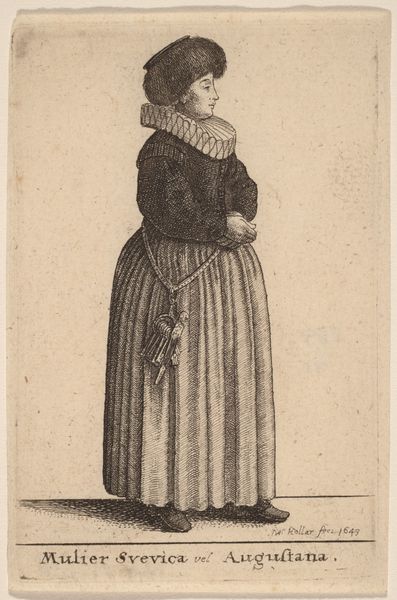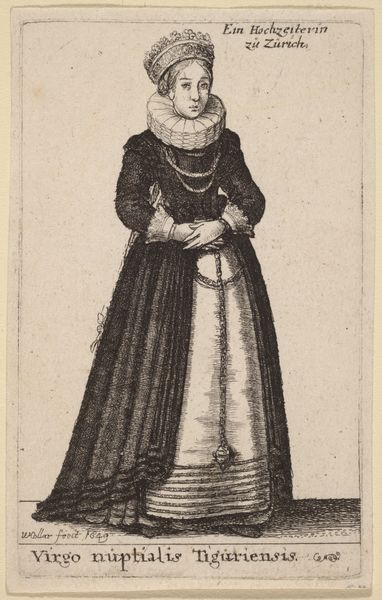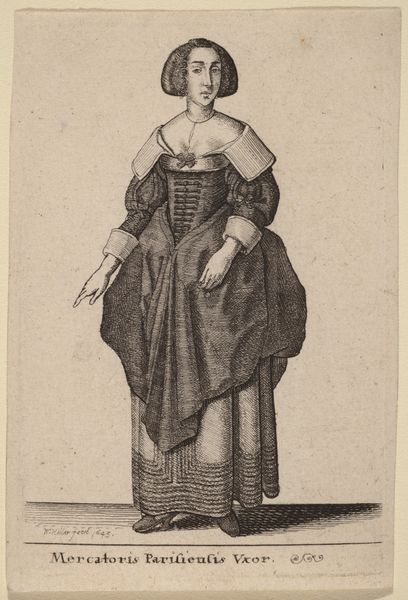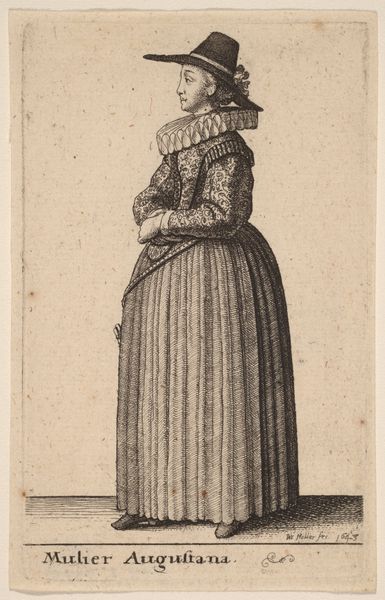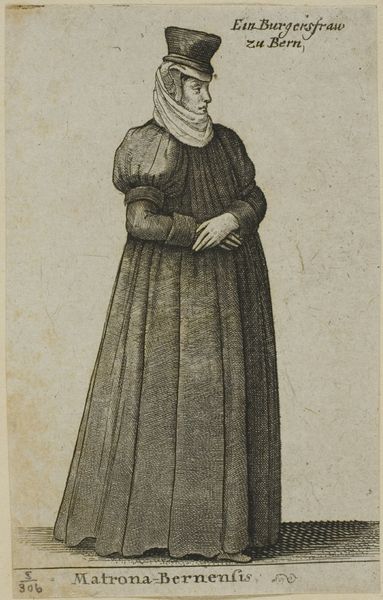
print, engraving
#
portrait
#
aged paper
#
toned paper
#
baroque
# print
#
old engraving style
#
figuration
#
old-timey
#
engraving
Copyright: National Gallery of Art: CC0 1.0
Wenceslaus Hollar made this print, "Mulier Argentinensis," depicting a woman from Strasbourg, using etching. Hollar was a Bohemian printmaker active across Europe during the 17th century. His prints, like this one, offer a window into the social customs and cultural identities of the time. The woman's attire, from her distinctive headdress to her fur-lined gown, speaks volumes about her social standing and regional identity in Strasbourg, then a melting pot of French and German influences. Prints such as this circulated widely and played a crucial role in disseminating visual information, shaping perceptions of different social classes and cultural groups. They offer valuable insights into the social hierarchies, economic structures, and cultural values of 17th-century Europe. As historians, we consult costume books, travelogues, and other period documents to understand the significance of details that are not immediately apparent. It is in this way that we can enrich our understanding of art as something contingent on its social and institutional context.
Comments
No comments
Be the first to comment and join the conversation on the ultimate creative platform.
